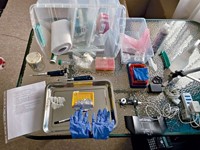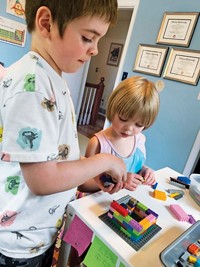Advertisement
Grab your lab coat. Let's get started
Welcome!
Welcome!
Create an account below to get 6 C&EN articles per month, receive newsletters and more - all free.
It seems this is your first time logging in online. Please enter the following information to continue.
As an ACS member you automatically get access to this site. All we need is few more details to create your reading experience.
Not you? Sign in with a different account.
Not you? Sign in with a different account.
ERROR 1
ERROR 1
ERROR 2
ERROR 2
ERROR 2
ERROR 2
ERROR 2
Password and Confirm password must match.
If you have an ACS member number, please enter it here so we can link this account to your membership. (optional)
ERROR 2
ACS values your privacy. By submitting your information, you are gaining access to C&EN and subscribing to our weekly newsletter. We use the information you provide to make your reading experience better, and we will never sell your data to third party members.
K-12 Education
Newscripts
Bringing DIY to scientific instruments
by Leigh Krietsch Boerner
May 16, 2021
| A version of this story appeared in
Volume 99, Issue 18
If you build it, they will come

It is a truth universally acknowledged that if you make something out of Lego, kids will want to play with it. This is a truth that Timo Betz, a biophysicist at the University of Göttingen, tapped into when he decided to build a working microscope out of some lenses and the Lego bricks he had on hand (bioRxiv 2021, DOI: 10.1101/2021.04.11.439311).
Betz was asked to give a lecture to middle school kids, and because he works with lasers and microscopes, he wanted to include some scientific instruments. “The microscopes we have in the lab are just basically too bulky and too expensive to just carry them around in front of the kids,” he tells Newscripts. Betz’s son was 8 at the time, and they used to play with Lego on the weekends. “Just out of the blue I asked my son, ‘What do you think? Do we try to build a microscope?’ ” Betz recalls. Two days later, they had a prototype.
A paper describing his latest microscope model is now on the preprint server bioRxiv. The microscope is made of roughly 300 Lego pieces, an iPhone 5 replacement camera, and two lenses. Betz even includes a Lego parts list, complete with numbers, so microscope makers can buy all the pieces online. Or you can do what this Newscriptster did and scavenge them from your kids’ Lego hoard.
It took a weekend and the help of two children, ages 6 and 9, to reconstruct Betz’s design, albeit with an adjustment to accommodate a larger lens. That’s the beauty of Lego, Betz says—you can modify it however you need.
There are many cheap microscopes nowadays, and they’re better than this one, Betz says. But the Lego microscope teaches kids about how magnification works. If the microscope doesn’t work, kids can fiddle around with it, change things, and play with it until they fix it, Betz says. “It really is fun.”
Taking materials into her own hands
Engineering, in a nutshell, is about designing, testing, making tweaks, and testing again. So it’s not a surprise that when COVID-19 closed down classrooms at the University of Toronto, Crystal Liu, a teaching assistant and master’s student in engineering, was able to tweak her plans to allow her undergraduate class to get some hands-on testing experience from home.
The class, a design course in which students build a project on their own, usually has access to tools in the university labs, Liu says. But with everyone remote, that wasn’t an option. “To me, it’s really important to make sure that engineering undergrad students have some hands-on experience through their studies,” Liu tells Newscripts. Before the shutdown, she had designed a mechanical tester, an instrument used to find the tensile strength of various materials. Using that as a jumping-off point, Liu scaled down the design and built it into a kit that the students could put together and use to test materials at home.
“Their first activity was to assemble it, follow the assembly menu, and run all the software,” Liu says. Then they had to test a bag of components that Liu included, plus some items they could find around their houses, such as potato chip bags. Finally, the students had to design their own experiment with the mechanical tester, which works by pulling on the material with a specific amount of force and measuring displacement until the material breaks or the stretcher opens as wide as it can.
Liu assembled the kits for 40 students. Several needed to be shipped to the west coast of Canada and to China, Turkey, and Dubai, United Arab Emirates. Sorting all the parts and packing them up took a long time, Liu says. “I thought about building a fastener-sorting machine,” she jokes. Liu’s design is open source, so anyone can download the plans from her website (crystalliu.ca) and build the tester. “I’m hoping to be able to give more students opportunities to work on things with their hands,” she says. After Liu finishes her master’s degree this summer, she’s planning on making these machines available by starting up her own product design company.
Please send comments and suggestions to newscripts@acs.org.





Join the conversation
Contact the reporter
Submit a Letter to the Editor for publication
Engage with us on Twitter